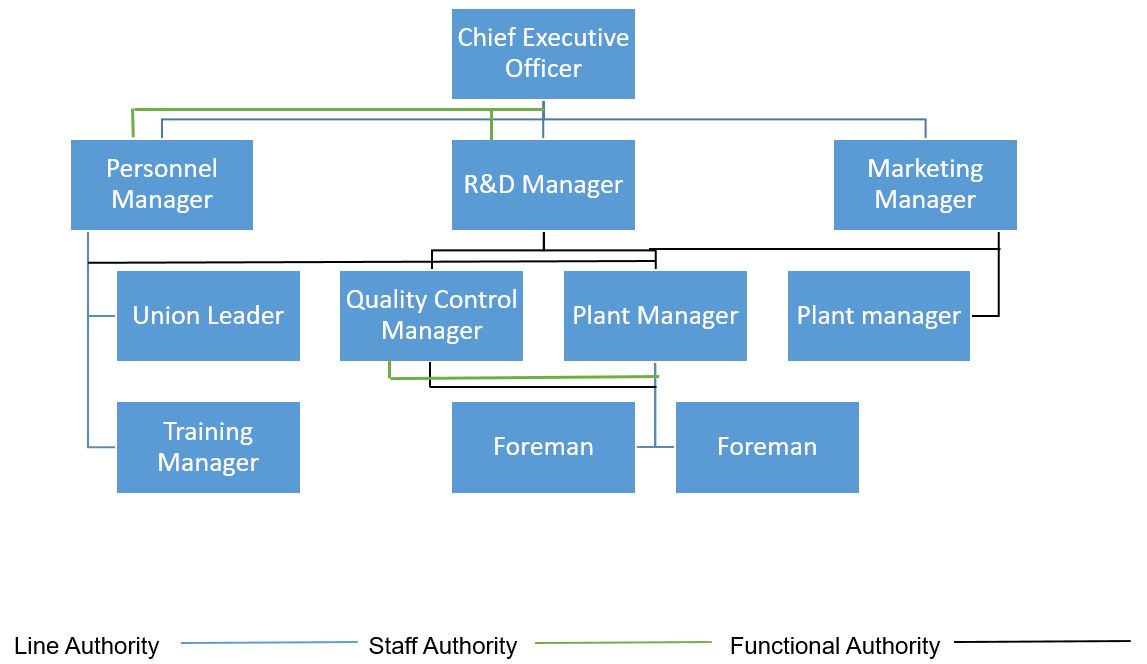INTRODUCTION
Organisation
is built around the structure, technological inputs, the processes and the
people. In a sense the structure of the organisation has influence on the
designs of both work and jobs. Organisational structures essentially depicts
the structure of interactions, communications as well as mode of operation and
the processes put in place to achieve the purpose for which business is set up.
MEANING OF ORGANISATION
Structure is about the patterns
of relationship among positions and in the organisation and members of the
organisation. Structure is clearly important in the sense that it makes
possible the application of the process of management and creates a framework
for orderly interaction and command through which the activities of the
organisation can be planned, organised, directed, and coordinated for easy
managerial decisions and controls. Whether small or large, every organisation
needs a structure which, not cast in iron, can be constantly reviewed to keep
with growth and development pace. Organisational structure according to Mullins
(2007) can help achieve the following objectives:
•
The economic and efficient performance of the
organisation and the level of resource utilisation;
•
Monitoring the activities of the organisation;
•
Accountability for area of work undertaken by
groups and individual members of the organisation;
•
Co-ordination of different part of the
organisation and different area of work;
•
Flexibility in order to respond to future
demands and developments, and to adapt to changing environmental influences;
and
•
The social satisfaction of members working in
the organisation.
ORGANISATIONAL DESIGN
The architecture of work is
built around structure, organisational processes, available technology and the
cadres of people meant to engage in various activities. Organisational designs
starts with the business idea for which the entrepreneur seeks to actualize in
reality by bringing together man, materials, machines and money to achieve
his/her objectives. Designs of organisations vary essentially along these
dimensions considering the size, activities, context and the managerial
experiences that gave birth to the design. In designing organisations, what
work for A may not work for B. There are two generic models of organisation
designs; the mechanistic and organic designs.
Mechanistic designs are built on Weberian bureaucratic prescriptions of rigidity and tightly controlled structure. This type of structure is characterized by high degree of specialization, rigid departmentalization, narrow spans of control, formalization of rules, authority and communication processes. The organisation is viewed as an objective entity in which precision of rules, decision, reward and sanction is highly valued.
Little is left to discretion of managers and
low-level employees are not involved in any form of decision making. This type
of designs placed premium on efficiency, rules, regulations, standardized tasks
and performance yardsticks. Human traits and characteristics like personality,
diversity, judgments and ambiguities are hardly considered. The main advantage
of mechanistic structures are predictability and stability while it has been
criticised as slow, insensitive to human needs and less adaptive to change.
Organic designs on the
other hand are a direct contrast to mechanistic designs. This type of
organisation is highly adaptive and flexible and built of high consideration
for human strengths and weaknesses. The core idea is meaningful jobs that
promise satisfaction and quality of work life through minimal control and
strict rules. The employee is empowered through training and developmental
programmes to make decisions, solve problems and be creative. Since adaptive,
organic organisations respond to changes, are flexible and tend to be more
effective in the long run. Individual discretion may lead to unpredictability,
increased costs of errors.
WORK DESIGN
i.
Environment. This
is concern for space for juxtaposition and installation of machine and
equipment, offices, corridors, stair ways that are friendly, safe and clean to
use
ii.
Machines and equipment.
Installing machines and equipment that ergonomically fit into human attributes
is the concern of Engineering Psychologist, Engineers, Architects and many
other experts who have an idea worked into a design, plan and supervised
execution and future maintenance.
iii.
Structure. The structure
narrates how people will relate, communicate, and coordinated to achieve
organisational goals, the type of work to be done dictate the structural
options; tall, flat, team based and decisions about which operations are
important; production, marketing, personnel etc to incorporate as departments
or units.
|
iv. |
JOB DESIGN
After the
structural layout of work demarcating departments, units, teams etc, the jobs
are next to be designed. Jobs consist of titles, tasks, duties,
responsibilities, conditions, hazards/risks and the social context (which later
comes out as organisational culture and climate). Job designs entails putting
these elements together for the job incumbent to be able to meet the goals and
objectives entailed on the job position.
ORGANISATIONAL STRUCTURE
Organisational structure is about what kind of work architecture/design to be put in place. It is basically about formal arranging and structuring work to accomplish organizational goals. There are several design options that will produce different structures of division of work, assignment of responsibilities, and coordination of clusters of jobs, establishment of lines of authority and bringing equipment/technology and people together to form departments, team or groups for the allocation and use of resources to produce goods and services.
Organisational structure can be tall or flat in the way departments are grouped; whether functionally, in consideration of geography, product, processes or customers. Tall structures have long span of control, many layers/job cadres and communication and authority flows from top downward. Organisational structure can be formal, informal or non formal.
Why formal organisation embodies the explicit and
formally stated set of rules and regulations that define the activities of the
members. The mechanisms of a formal structure includes the charts,
rules, chains of commands, spans of control that are essentially in written
form. The structure is often arranged hierarchical order of order of authority
on top of which is the Board of Directors, management, middle management,
lower-level management and the rank and file.
 |
| Organisational structure |
CONSIDERATIONS IN WORK DESIGN
Some of the factors to put into
consideration in designing the work are:
1.
Philosophy, policies and objectives of
organisation.
2.
Interface among structure, machines and
equipment, technology and people.
3.
Flow of authority, chain of command and
communication
4.
The need for efficiency of costs, safety and
health of workers
5.
Degree of centralization or decentralization (or
employee empowerment) required for efficient work processes.
6.
Degree of formalization and or flexibility to
ensure flexibility and adaptability to change.
7.
Ensuring job satisfaction, commitment and citizenship
behaviour through responsive work designs.
CONCLUSION
Organisational
structure is important architect for arranging and structuring work to allow
for smooth control, hierarchy and order. If attention is paid to how structure
and processes determines behaviour, culture and job satisfaction, crafting the
organisational structure and designing work and jobs have to be done with care
and concern for the fulfilment of organizational goals.



Comments
Post a Comment